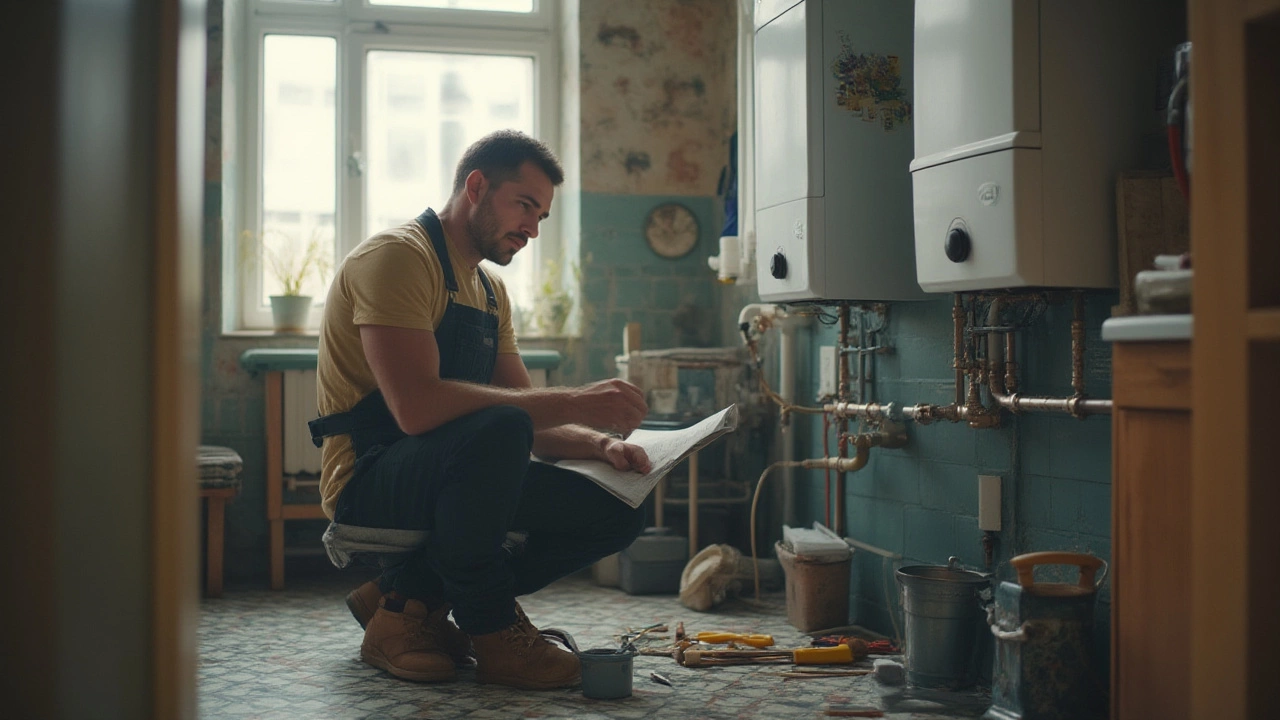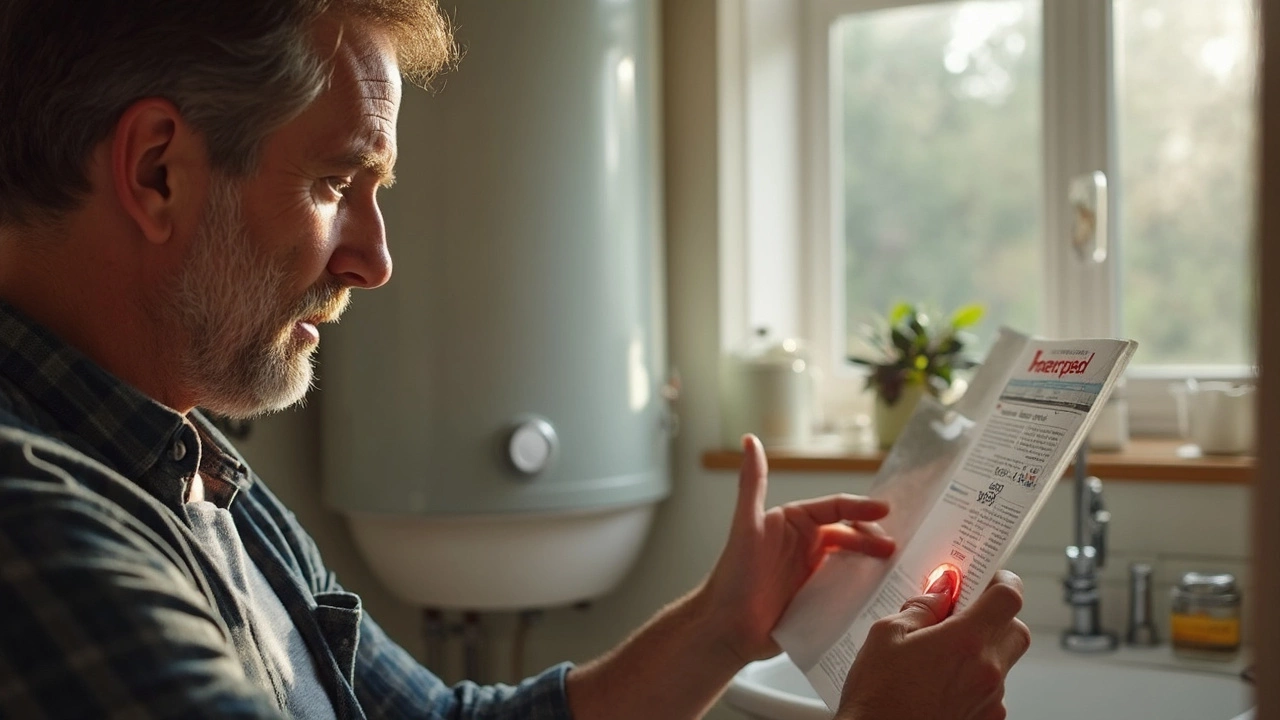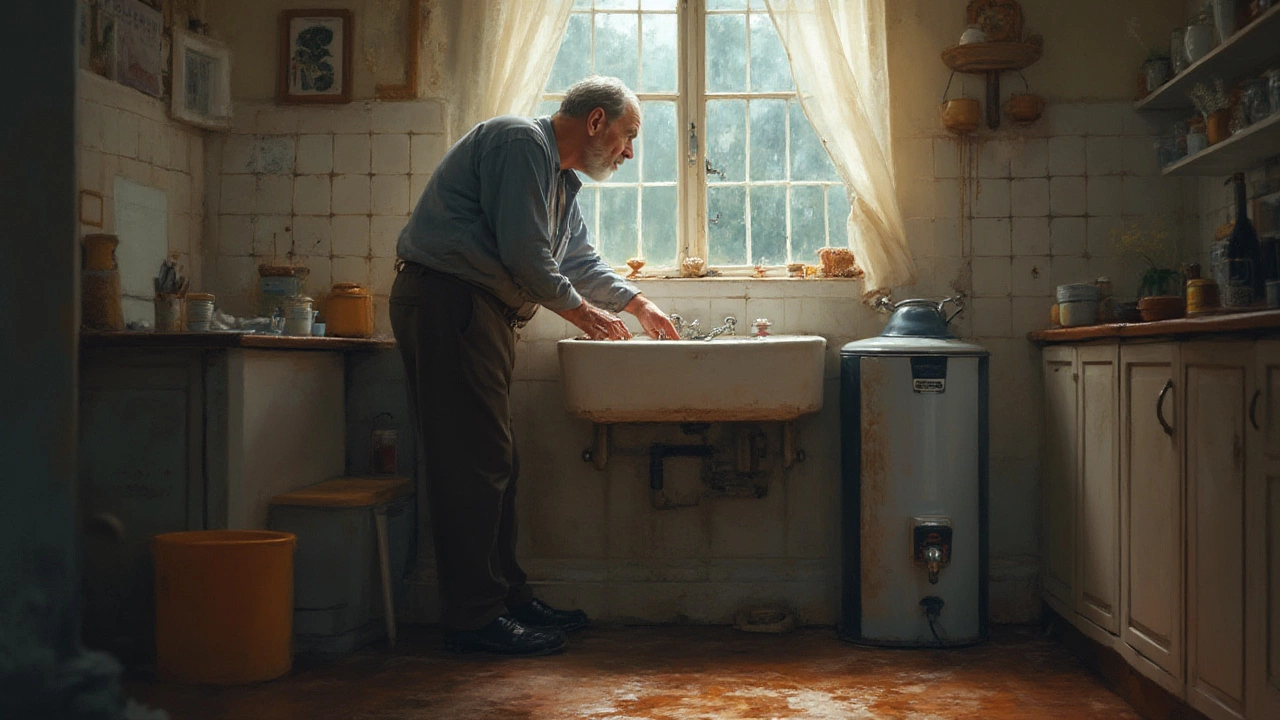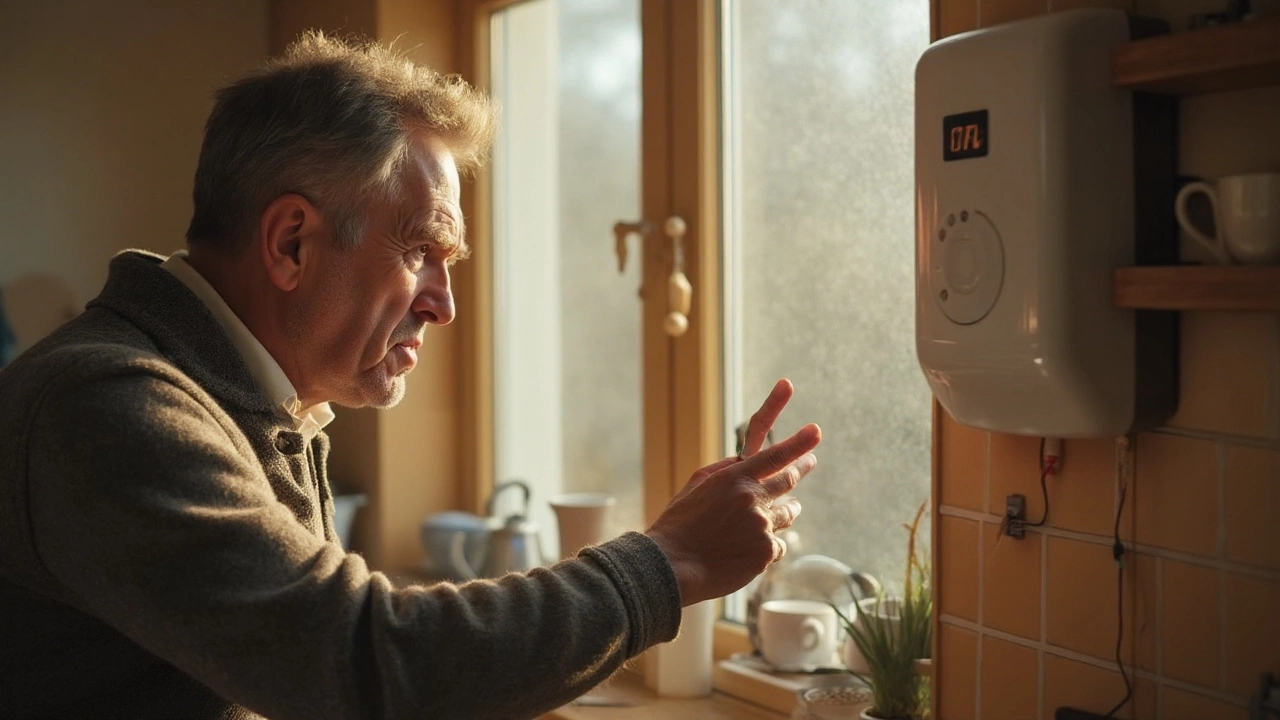
- 4 Jul 2025
- Gideon Thornton
- 0
You wake up, shuffle bleary-eyed into the bathroom, and turn the tap—only to be greeted by an icy splash. In that instant, your day grinds to a halt. No hot water, and everything on pause. Believe me, in our house, it’s almost a crisis if Soren doesn't get his warm bath or Evelyn has to start the kettle for oatmeal with cold hands. Sound familiar? You’re not alone—around 18% of British households report hot water disruptions each year, especially when the weather turns chilly. But the good news? Most of the time, the fix is simpler than you think and you don’t need to ring up a plumber right away or drain your bank account. Let’s get your hot water back on tap, pronto.
Common Culprits Behind Hot Water Refusing to Turn On
Hot water is one of those things you take for granted until it’s painfully absent. The first step to solving the problem is knowing what you’re up against. Usually, the reason boils down to just a handful of issues. If you’re living in the UK, odds are you’ve got either a combi boiler, a system boiler, or an immersion heater somewhere in the house. Each one has its quirks, so let’s break them down.
Combi boilers are popular here in Bristol and across the UK because they do two jobs: heat your water on demand and keep your radiators toasty. If yours isn’t coughing up hot water, it could be as simple as low pressure. Yes, that tiny gauge on your boiler matters—a lot. If the pressure drops below 1 bar, the heating circuit won’t fire up. Sometimes, it’s a dodgy thermostat or programmer misbehaving. Those are worth double-checking before panicking. I still remember the time Evelyn accidentally nudged ours with a pile of wet laundry—it took half the morning to realise the schedule had got reset to "eco mode." Interference from innocuous things, right?
Here’s a quick fact: Nearly 35% of hot water failures are down to user error. Got a timer, digital display, or thermostat? Triple-check the settings. Even the clock changing for daylight saving can reset your entire schedule. Other times, the culprit is electrical. Immersion heaters often trip fuses, especially if there’s a power surge after a storm. It’s not uncommon—the National Grid reports spikes in household fuse box callouts after every storm season. It’s always worth glancing inside your consumer unit for any tripped switch or blown fuse before working yourself into a frenzy. If you spot one, flick it back on. If it trips again, best not to push your luck—something deeper could be up.
The third big cause is pilot light or ignition problems, mainly for older boilers or storage tanks. If you peer in and see no blue flame, or hear a click that never lights, the flame sensor, ignitor or even a blocked pipe could be responsible. Hard water, common in the southwest UK, also leaves limescale all over heating elements and pipes, slowly choking the flow. Fun fact: Hard water knocks about 25% off heating efficiency and clogs can reduce flow to almost nothing. Check for telltale signs like popping noises, slow-to-heat water, and, well, absolutely freezing showers.
Sometimes multiple things line up—like me running a bath for Soren while the washing machine’s on and someone’s in the shower. Hot water tanks can only replenish so fast, and British cold snaps make the issue worse. If you notice the tank cold after a big water splurge, give it a bit to recover. If it never bounces back, suspect a broken heating element or thermostat.
| Potential Cause | Typical Fix | % of Cases |
|---|---|---|
| Low Boiler Pressure | Re-pressurise boiler | 38% |
| Thermostat/programmer error | Check/reset settings | 19% |
| Tripped fuse/switch | Reset fuse box | 14% |
| Limescale/hard water | Clean element/flush | 16% |
| Pilot light/ignition fault | Ignitor service | 13% |

Step-by-Step Troubleshooting for Hot Water Problems
This is where things get hands-on, but don’t worry if you’re not gifted with a toolbox. Most issues need more detective work than brute force. You just need to follow the clues. Step one: Has anything changed? New appliance, a blown bulb, recent work on the house? That sometimes messes with the system. You’d be surprised how often it’s that simple.
Let’s walk through a basic checklist to tackle your hot water not turning on:
- Check if it’s an issue everywhere or just one faucet. Cold everywhere? Total system fault. Only in the bathroom? Probably a tap, valve or limescale build-up.
- Look at the boiler or heater display. Most modern boilers display error codes. Jot these down if you see them. Each manufacturer’s codes are different, so a quick web search with the brand/model and code usually reveals what’s up.
- Test the pressure gauge. “Normal” is between 1 and 2 bar—anything lower stops your boiler firing up. Use the filling loop (a small silver hose below your boiler) to top up, but do it slowly and watch for leaks.
- Reset everything. Yes, as basic as “turn it off and on again.” Press the reset button, wait a minute or two. Half the time, this solves mystery hiccups—modern boilers are basically computers these days.
- Visit the fuse box/consumer unit. If any switches are down, flip them up. If they keep tripping, write down which one it is and stop—don’t keep forcing it. That usually means a short or a bad element.
- Review settings/timers. This catches loads of people out in autumn and spring. Make sure it’s not set to “eco,” “holiday,” or a weird timer. If you have a smart thermostat, check the app—it might have overridden the manual controls.
- Look for leaks or pooling water. Wet patches around the boiler or cylinder are a bad sign and can explain why it’s shut off for safety. If you see water, turn the system off and call a pro.
- Listen for odd noises. Gurgling, thumping, or clicking as it tries to start up aren’t just annoying. They can tell you whether there’s air in the system, limescale on the element, or a pump on the fritz.
- Check pilot light or ignition. On older boilers or gas water heaters, you should see a blue flame. If it’s gone, try relighting (see your manual). Electric or sealed units don’t have these, so skip if you’re not sure.
- For immersion heaters, test the switch and fuse. These are usually on a wall nearby. Sometimes the isolator switch is accidentally flipped off while cleaning or moving furniture—happens more often than you’d think. Replace fuses if they’re blown, but if they keep blowing, don’t mess with it further.
If after these steps you’re still stumped, it’s probably time for a pro. At this point, you’re likely looking at a faulty valve, a burned-out heating element, or even a busted gas supply. For plain old electric immersions, a heating element swap is pretty straightforward if you’re handy, but for boilers or gas, leave it to a Gas Safe registered engineer. Trust me, you don’t want to risk a gas leak. In Bristol, Gas Safe certification isn’t just a suggestion—it’s law.

Preventing Hot Water Headaches in the Future: Tips and Insights
Nobody wants to relive the cold shower shock, not even once a year. A little routine care goes a long way, and most homes just don’t give these systems the attention they deserve. UK energy watchdog Ofgem found that regular servicing can extend a boiler’s life by up to eight years and prevent £200+ in surprise callouts annually. Prevention saves hassle—and cash.
I like to schedule a boiler inspection every autumn—keeps surprises out when winter hits. Your local technician should check for corrosion, worn seals, and test safety valves. If you’re in a hard water area like us, flush the system every two years to blast out limescale. Some newer combi boilers even have self-cleaning cycles, which are brilliant for lazy folks (or just the perpetually busy parent like me). And if your tank or heater is pushing 15 years, it could be time for an upgrade. Modern condensing boilers are about 92% efficient, compared with old tanks hitting just 60-70%. The difference shows up instantly on your energy bills—not just in less grumbling over cold breakfasts.
Another tip: keep clutter away from your boiler or immersion heater. Soren’s toy collection once managed to block the boiler vent—lesson learned. Don’t drape laundry over heaters or cram stuff into cupboards that share space with your system. Boilers need air to breathe, and blocked vents mean shut-off or dangerous carbon monoxide risk.
Smart home tech can also make a difference. Modern thermostats spot problems earlier and let you tweak settings without crawling behind the unit. Even a cheap digital timer upgrade saves drama after power cuts or clock changes. Snap a photo of your setup and note any error codes or quirks, so when you call for help you don’t waste time playing 20 questions. Most engineers love it when you can share details upfront—gets things fixed faster.
Most breakdowns happen on holidays and Sundays—when it’s least convenient, right? Always keep a stash of emergency numbers in your phone and know your boiler’s make and model. It takes 30 seconds to jot it down and can halve the time you’re stuck waiting for heat. Google reviews really help for picking a reliable local engineer in a hurry—look for high-rated, Gas Safe registered pros, even if it means waiting an extra hour.
If you want to stop the madness once and for all, fit an inline water softener or filter if your region’s got mineral-heavy water. They’re not just for posh kitchens—they practically halve the scale in both kettles and hot water systems. Even Evelyn noticed her tea tasted better afterwards. Small upgrades like lagging pipes with insulation save so much heat loss. Ofgem’s studies put the savings at up to £60 a year just from lagging a standard UK cylinder and exposed pipes.
Life’s better when little fixes don’t ruin your day. Keep on top of maintenance, know your system, and the hot water will keep flowing. No more icy wake-up calls. Trust me—your mornings will thank you.




